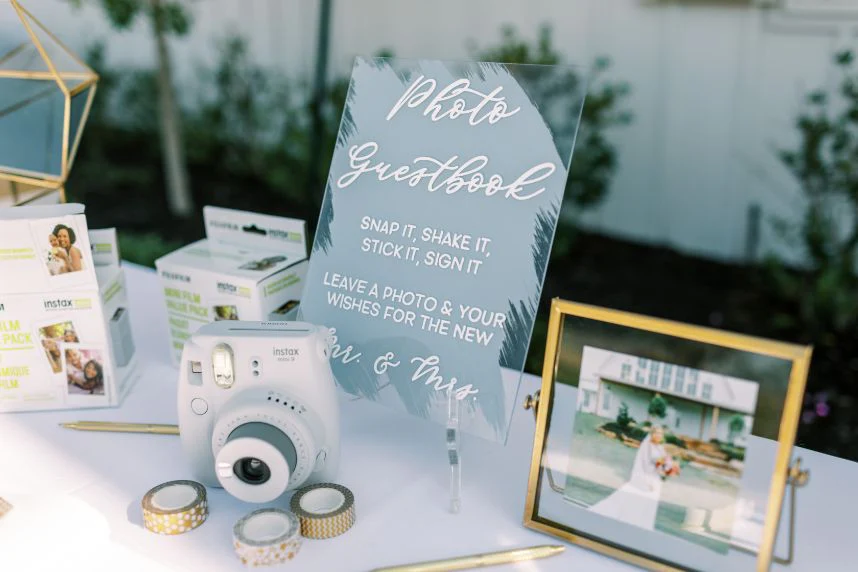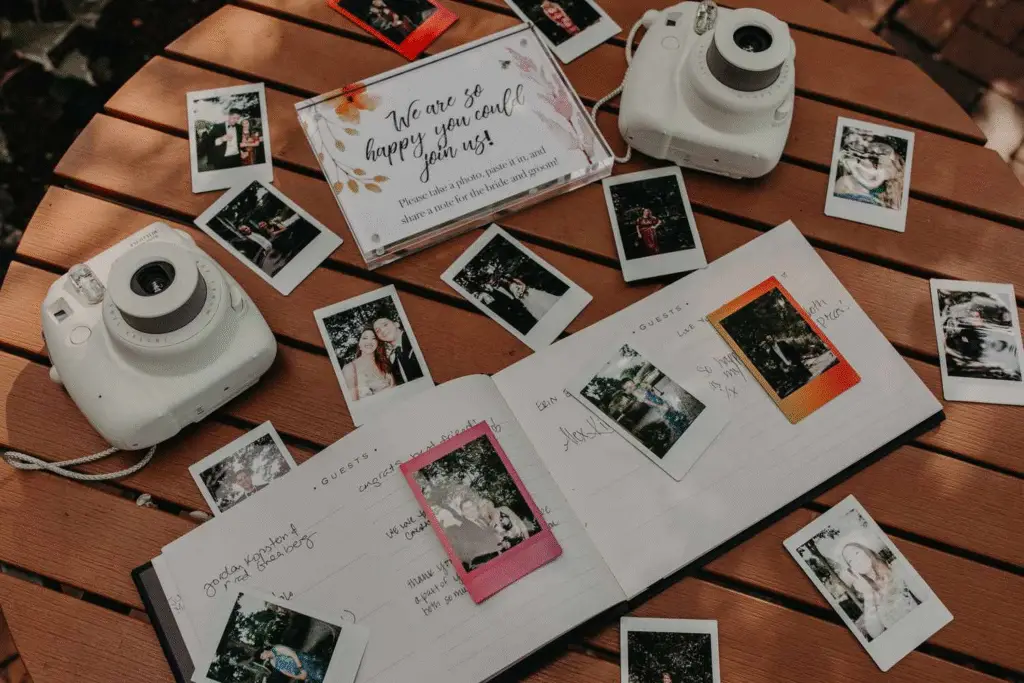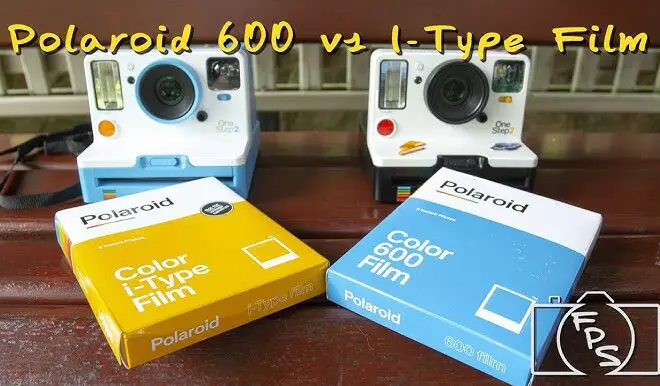
Polaroid camera for wedding: What to choose?
Table of Contents
As an Amazon Associate, I earn from qualifying purchases.
Why use instant / Polaroid camera for wedding?
Before diving into models, it’s good to understand why people like to include instant cameras at weddings, and what trade-offs are involved.
Pros
- Nostalgic / aesthetic appeal: The unique look of instant film can complement vintage or rustic wedding styles.
- Good backup / candid coverage: These work as supplemental coverage (not replacing your main photographer), especially for informal, fun shots.
- No need for printing later: You don’t have to wait or outsource for prints.
- Interactive / fun element: Having a “photo station” or letting guests take candid instant snapshots can add a playful element to the event.
- Tangible keepsakes: Guests can instantly get a photo to take home, stick in a guestbook, or pin on a board.
Cons
- Supply logistics: You’ll want spare film packs, batteries, cleaning tools, etc.
- Fragility / handling: Guests may mishandle the camera or prints; you’ll want to plan for protective storage, a stable station, etc.
- Speed / wait time: The print takes time to develop; guests may have to wait.
- Limited control & exposure constraints: Because instant cameras are often simple point-and-shoot devices (auto exposure, fixed focus or basic focusing), in challenging lighting (low light, backlight) the shots may be under- or overexposed.
- Film / print cost: Instant film is expensive per shot. With many guests, that cost adds up.
For example, wedding forums note that film can be the more expensive part of a Polaroid photo station setup.

What to look for in a “wedding-friendly” instant camera
When evaluating instant cameras for weddings, here are key features and criteria:
| Feature | Why it matters | Ideal / good spec |
|---|---|---|
| Film format (size, cost, availability) | Larger prints look more impressive; cheaper film lowers cost | A balance: not too small (gives value) but not prohibitively expensive |
| Light sensitivity / exposure control | Weddings often have mixed lighting (indoors, low light, etc.) | Good auto exposure, flash control, possible manual override |
| Focus system | If guests use the camera, focus should be forgiving or automatic | Fixed focus with good depth of field, or autofocus / zone focus |
| Ease of use / interface | Guests should be able to figure it out quickly | Simple operation, minimal dials, intuitive controls |
| Durability / battery | You don’t want the camera to die or break mid-event | Rechargeable battery (USB-C preferable), robust body |
| Extra features | Enhance creative use or flexibility | Self-timer, mirror for selfies, double exposure, removable flash, etc. |
| Digital backup / preview | So you don’t waste shots on bad exposures | Hybrid models allow you to preview or save to digital before printing |
The ideal wedding instant camera is one that balances quality with usability and cost control.
Tips for deploying instant cameras at a wedding
Having selected one or more cameras, here are practical tips and best practices to get the best results:
- Set up a dedicated photo station
Provide a stable table or stand, good lighting (a lamp or flash bounce), props, and instructions. - Provide enough film & spares
Estimate number of guests * expected usage + buffer. Film runs out quickly. - Train a point person / monitoring
Assign someone (photographer assistant, friend) to refill film, guide guests, prevent misuse. - Lighting is key
Use ambient or auxiliary light. In dim rooms, the camera’s flash may not suffice for group shots deep in a hall. - Use self-timer / mirror for selfies
Encourage guests to take self-portraits; many modern instant cameras include selfie mirrors. - Guestbook / display plan
Have a guestbook or display board full of slots so guests can stick in prints, leave messages. - Protect prints
Let them dry, handle by edges, avoid bending or stacking while wet. - Reserve some film for couple / portrait shots
For the couple’s own instant shots at a key moment. - Hybrid backup (if possible)
If your camera allows saving a digital copy (hybrid models), that helps avoid losing key shots. - Test in the venue in advance
Do trial shots in the actual lighting conditions of the venue (reception hall, dance floor, etc.).
Top Polaroid / instant camera models to compare
Here’s a highlight and comparison of top ones:
| Camera | Format / Film | Strengths for weddings | Weaknesses / tradeoffs | Best use scenario |
|---|---|---|---|---|
| Polaroid Now Generation 3 | Polaroid i-Type / 600 (square) | Simple point & shoot, classic look, decent for guest use | Limited creative control, film cost higher, struggles in low light | Good “main” Polaroid option if you want brand prestige |
| Polaroid Now Gen 2 | i-Type / 600 | Balanced choice, known model, easier to find used / accessories | Same limitations in tricky lighting | Solid fallback or guest camera |
| Polaroid Now+ Gen 2 | i-Type / 600 | Adds app control, creative modes, double exposure | Slightly more complex, same film cost issues | If you or someone is comfortable handling its extra features |
| Polaroid Now+ Gen 3 | i-Type / 600 | Newer features, likely incremental improvements | Still limited exposure control vs hybrid types | Good “future-proofed” Polaroid |
| Polaroid Go Gen 2 | Polaroid Go (mini square) | Very compact, fun to pass around, novelty factor | Small prints, weak in low light | For casual guest use, fun side camera |
| Polaroid Originals 600 Impulse | Polaroid 600 / i-Type | Classic / retro appeal; familiarity with 600 film | Basic, less control, older model constraints | For vintage aesthetic or secondary camera |
| Polaroid Go (classic) | Polaroid Go film | Compact, novelty | Very limited in poor lighting | Backup / fun camera to pass around |
| Fujifilm Instax Mini 12 | Instax Mini | Very easy to use, low film cost, good guest usability | Not a “Polaroid brand,” smaller print size | Ideal guest use camera / backup or main if print size acceptable |
How they compare (Polaroid vs Instax / “best for weddings”)
Here’s a distilled comparison, especially in U.S. wedding contexts:
| Factor | Polaroid (i-Type / 600 / Go) | Instax (Mini / Square / Wide) & hybrid alternatives |
|---|---|---|
| Brand / prestige | Strong “Polaroid” name and classic appeal | Less brand prestige in “Polaroid” sense but good reputation |
| Film cost & availability (U.S.) | More expensive film; fewer variant options; i-Type / 600 film is premium | Instax film is more affordable, widely stocked, more format diversity (Mini, Square, Wide) |
| Ease for guests | Simple models are good, but exposure / flash limitations more critical | Often more forgiving in mixed lighting, simpler exposure systems |
| Low light / indoor performance | Flash is often all you have; limited control over exposure | Often better auto exposure, more flash tuning |
| Print size / visual impact | Polaroid prints are iconic and a bit larger / more “impactful” visually | Instax prints are often smaller, but many couples accept that tradeoff |
| Creative / extra features | Polaroid Now+ adds more creative control, but overall fewer modern “hybrid” features | Many Instax / hybrid models (e.g. Instax Mini Evo) let you preview or choose prints, save digital, etc. |
| Resale / backups | Polaroid brand has collector appeal but can be niche | Instax gear generally more broadly used; parts & film easier to source |
Because of these tradeoffs, many wedding photographers and couples in the U.S. choose to use Instax / hybrid for guest cameras or backup, and reserve a Polaroid as the “signature” camera or for curated moments.
For example, in one wedding advice blog, the author recommends sticking with Instax Mini models for weddings because they’re easier and more reliable under varied conditions. In forums, couples frequently mention Instax for guest use due to lower running costs.
Tom’s Guide, in its 2025 review, calls the Instax mini 41 the “best instant camera for weddings” because of ease, battery life, and print reliability.
However, if you have your heart set on a Polaroid brand, the options above are among the best.
Hybrid / alternative / non-Polaroid options (often very strong for weddings)
These are not “Polaroid brand” but often compete better for certain use cases.
- Fujifilm Instax Mini Evo
A hybrid model: it lets you preview & select images to print, connect via app, etc. It gets high praise for combining analog & digital flexibility.
Tom’s Guide calls the Instax Mini Evo “best overall instant camera” in their 2025 round-up. - Fujifilm Instax SQ1
Square format Instax — good option if you like the square aesthetic but maybe cheaper than Polaroid. - Fujifilm Instax Wide Evo
For wide / larger prints. If group shots or wide coverage is important, this is worth considering.
(Wide prints have appeal in a guestbook or displayed collage.) - Fujifilm Instax Mini 12
Very simple, affordable, and user-friendly. Good for multiple guest usage.
Good Housekeeping describes Instax Mini 12 as a “wedding must” because it’s compact, easy to use, and guests can manage it.

My recommendation & conclusion
If I were planning a wedding and wanted to include instant / “Polaroid style” cameras, here’s what I’d lean toward:
- Use a hybrid instant camera (e.g. Fujifilm Instax Mini Evo) so I could preview and choose what to print, reducing wasted film.
- Also have a simpler backup camera (e.g. Instax Mini 12) for guests or props, so you don’t worry if one fails.
- If I particularly want the “Polaroid brand feel,” pick a Polaroid Now / Now+ model, but accept the higher film cost and less flexibility.
READ ALSO: Should you shake polaroids?



